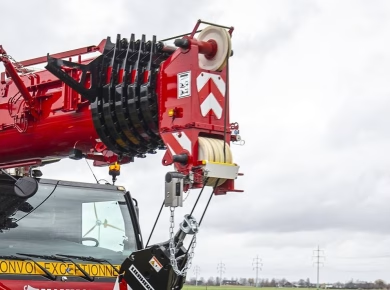Facing the challenge of constructing a fire-resistant wall that passes inspection and protects lives? You’ve likely dealt with the complexities of adhering to strict fire safety regulations. Think about the need for your construction to align with local laws and also meet the standards of fire inspectors. From helping many clients with similar needs, here is what consistently delivers successful results.
Understanding Fire-Rated Walls
Fire-rated walls are crucial in preventing the spread of fire within a building, providing occupants with a safe means of egress and protecting valuable property. These walls are designed to withstand fire for a specified period, usually rated from one to four hours, depending on the building’s use and occupancy classification. The core problem arises when people underestimate the significance of materials, construction methods, and proper installation techniques.
Why Fire-Rated Walls are Essential
Fire-rated walls can mean the difference between life and death in a fire emergency. They serve as barriers to slow the spread of flames, thus allowing occupants more time to evacuate and firefighters more time to respond. When I was working on a recent project in a high-rise office building, the fire marshal emphasized that even minor lapses in fire wall integrity could lead to catastrophic results. This was a wake-up call that reinforced the importance of getting it right the first time.
Choosing the Right Materials
The first step in building a fire-rated wall is selecting the appropriate materials. **Using non-combustible materials is non-negotiable.** The International Building Code (IBC) specifies certain materials for fire-rated assemblies, including gypsum board, concrete, and certain types of masonry.
Gypsum Board: The Go-To Choice
Gypsum board, or drywall, is commonly used due to its fire-resistant properties. When selecting gypsum board, look for Type X or Type C boards, which are specifically designed to meet fire-resistance ratings. For example, Type X board provides a one-hour fire rating while Type C can achieve ratings of up to two hours when installed correctly.
Concrete and Masonry: The Heavyweights
For higher-rated fire walls, concrete and masonry are often preferred. They not only provide excellent fire resistance but also structural integrity. When installing a concrete fire-rated wall, ensure that the concrete mix meets the required compressive strength and that all joints are properly sealed to prevent fire from spreading through openings.
Installation Techniques that Meet Codes
Even the best materials won’t help if they’re not installed correctly. Here’s where most DIYers get it wrong. **Proper installation techniques are crucial** for fire-rated walls to pass inspection.
Layering for Effectiveness
When building a fire-rated wall with gypsum board, it’s essential to adhere to the manufacturer’s specifications regarding the number of layers. For instance, a two-hour fire-rated wall typically requires two layers of Type X gypsum board on each side of the wall. Each board must be staggered to ensure that joints do not line up, which could compromise the wall’s integrity.
Fire Caulking and Fire Stop Systems
Another critical component is the use of fire caulking and fire stop systems. These materials are designed to seal gaps and penetrations in fire walls, preventing the passage of smoke and flames. You must use fire-rated caulk in all joints and openings. **Never skimp on fire stop systems,** as these are often the first line of defense during a fire.
Compliance with Local Codes
Another layer of complexity is ensuring compliance with local building codes. Building codes can vary significantly from one jurisdiction to another, so it’s essential to consult local regulations. In my experience, I’ve found that municipalities often have unique requirements that can affect the design and materials used in fire-rated walls.
Obtaining Necessary Permits
Before you even start construction, make sure you obtain all necessary permits. This usually involves submitting plans for review and paying applicable fees. The review process can be time-consuming, so factor this into your timeline.
Preparing for Inspection
Once construction is complete, you’ll need to prepare for a fire inspection. It’s beneficial to conduct a self-inspection before the official one. Inspectors will check for proper material use, installation techniques, and compliance with the approved plans. Here’s exactly how to prepare:
- Ensure all materials are as specified in your plans.
- Verify that all penetrations are properly sealed with fire-rated materials.
- Check that all joints are staggered and secured as per guidelines.
- Document your work with photos and notes in case you need to refer back during the inspection.
Common Pitfalls to Avoid
In my years of experience, I’ve seen many projects fail inspections due to avoidable mistakes. Here are some common pitfalls to watch out for:
Ignoring Manufacturer Specifications
User manuals and manufacturer specifications are there for a reason. Ignoring them can lead to significant issues. For example, if you don’t follow the correct installation techniques for a fire-rated wall, you risk failing inspection and compromising safety.
Cutting Corners on Fire Stop Materials
Some contractors may try to save money by using non-rated materials in fire stop systems. This is a critical error that can lead to devastating consequences. Always use materials that are tested and approved for fire-rated assemblies.
Innovations in Fire Safety Technology
The construction industry is continually evolving, and innovations in fire safety technology are no exception. New materials and techniques are being developed to enhance fire resistance. For example, intumescent coatings can be applied to steel structures to improve their fire rating significantly.
Utilizing Smart Technology
Smart technology is also making its way into fire safety. Systems that can detect smoke and heat early and alert occupants are becoming more common. Integrating these systems with fire-rated walls can further enhance safety measures.
Final Thoughts on Fire Safety
Building a fire-rated wall is not just a regulatory requirement; it’s a matter of safety that can save lives. The stakes are high, and the process can be daunting. However, by focusing on the right materials, adhering to codes, and employing best practices in installation, you can create a fire-rated wall that not only passes inspection but also provides peace of mind.
Remember, meticulous attention to detail is your best ally. By following the guidelines laid out in this article and learning from the experiences of others, you can build fire-rated walls that truly stand the test of flames. Never underestimate the impact of a well-constructed fire barrier; your efforts could make all the difference in an emergency.





